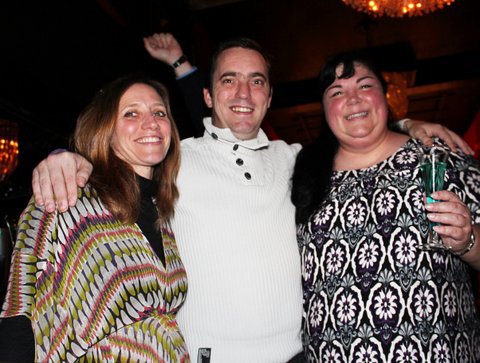We’ve started the Blue Badge Style Sports Blog to help advise less able people on how to get into sports. Each week we feature a different Paralympic athlete writing about their own sport.
GB Paralympic Archer and friend of BBS, Leigh Walmsley, has written the first in our new series of Sports Blogs. Leigh competed at the 2012 Paralympics in London and has contributed an excellent piece on her experiences and how you could get involved in Archery. With no further ado, it’s time to hand over to her:
Growing up, I was never particularly good at sport. I was born with several conditions in my feet and ankles, exacerbated by a serious cycling accident at age 11. Then in my late 20s, I was diagnosed with Rheumatoid Arthritis. I shied away from team sports and group activities because I felt uncoordinated and clumsy and trying to keep up was often awkward and painful.
But in 2006, I decided that I needed to get outside, get active and meet new people. However, I needed to find a low impact sport that was fun and social, but wasn’t too fast-paced or strenuous on my joints or feet. I felt that archery would meet my needs.

Due to illness and injury, it wasn’t until 2008 that I was able to have a full outdoor season and then I was hooked! In 2009, I was invited to attend a Para-Archery Talent ID weekend held by Archery GB, the national governing body, where I was classified as a disabled archer. I then applied for the UK Sport Talent 2012 programme, was invited to a trial and subsequently chosen for the programme in 2010. Although I wasn’t chosen for the GB Para-Archery Squad, I continued my training.
In 2011, I competed as an individual in my first British Wheelchair Archery Association Invitational/National Championships at Stoke Mandeville. I qualified in third place and eventually won the bronze medal in the standing recurve category. I was then invited to travel with the squad to the Czech Republic for a world ranking event the following month. I shot a personal best in the qualification round and although I didn’t medal in the individual, I won gold with the women’s recurve team. I was then invited to become a member of the GB squad. In 2012, I placed second in the selection shoots and was chosen to represent the country as part of the London 2012 Paralympic Archery Team.
Archery was the first sport at the Stoke Mandeville Games (the precursor to the Paralympic Games) in 1948. One of the best things about the sport is that it is not adapted for those with a disability. The archers do the adapting and therefore can compete locally and nationally with their able-bodied counterparts.
There are two types of bows used in disabled archery, also known as para-archery, which are recurve and compound. While bow type is a personal choice, it’s best to try both, as one may be more accommodating to your disability. All archers must complete a beginner’s course run by an Archery GB club before they are allowed to join as a shooting member. This ensures they understand the safety procedures, handling of equipment and basic technique. Archery GB has a good overview on how to get started in its beginner’s guide.

There are a vast number of clubs throughout the UK, many of which have disabled sections, and can be found via Archery GB. It’s important that potential disabled archers choose a club that is disabled friendly with appropriate facilities and parking, and has members that understand the aspects of disabled archery and are willing to assist with setting up targets and collecting arrows. One of the best starting points is the British Wheelchair Archery Association, which promotes disabled archery in the UK and hosts training weekends at Stoke Mandeville from October to March, as well as a national championship in June.
There are different formats of target archery in the UK – imperial and metric. Imperial rounds are shot in yards and tend to be named for towns and cities, such as York, Bristol and Portsmouth and have 5 zone scoring. Metric rounds tend to known by their maximum points or distance in meters and have 10 zone scoring. For more information, see Archery GB’s A Guide to Scoring and Tournaments.
At international level, World Archery is the governing body that holds specific events for para-archers. While club-level archers do not require classification to compete, para-archers competing at international level are required to be classified for their disability.
At the moment, there are three classifications in international para-archery:
ARST – Standing – Athletes may compete standing or using a shooting stool and have limited impairment.
W2 – Wheelchair 2 – Athletes compete from a wheelchair and have “significantly limited lower limb function with little or no upper limb impairment e.g. athletes with paraplegia, diplegia or double leg amputation below the knee.”
W1 – Wheelchair 1 – Athletes compete from a wheelchair and have “limited function in lower and upper limbs, and usually trunk e.g. those with high level spinal cord injuries, or high multiple limb amputations”.
Whether you chose to do archery as a social activity or pursue it to Paralympic level, rest assured it will be one of the best decisions you’ll ever make. While it takes focus, determination and commitment to succeed, it is an engaging sport that all ages and abilities can enjoy.
Good shooting!
I am sooooooo happy that this series of sports blogs has started again. Well done Leigh for such an informative and interesting blog.